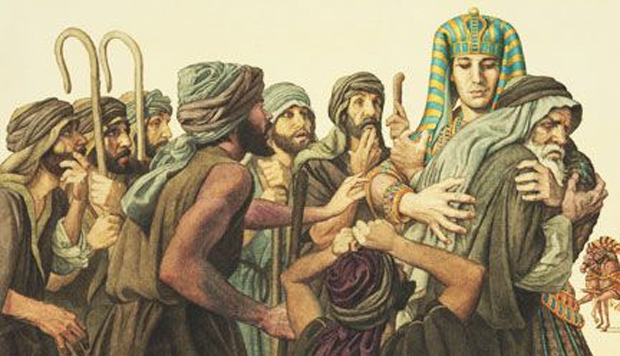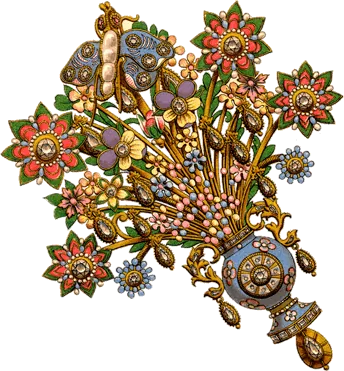According to Scripture, the Messiah will build the Third Temple, gather the exiles of Israel, usher in an era of world peace, and spread universal knowledge of the God of Israel. How is it, then, that the Messiah could suffer and die?
Messianic Expectations
According to Scripture, the Messiah will build the Third Temple (Ezekiel 37:26-28); gather all Jews back to the Land of Israel (Isaiah 43:5-6); usher in an era of world peace (Isaiah 2:4); and spread universal knowledge of the God of Israel (Zechariah 14:9). As Jews we anxiously await this day and seek to hasten its advent. In the words spoken by Paul in Aramaic, ‘מרנאתא – Maranatha!’ However, as Messianic Jewish believers in Jesus of Nazareth, what can we say in response to the claim that Yeshua did not fulfill the criteria of a Messianic redeemer? According to the plain meaning of the text, it is reasonable to accept that since no one has ever fulfilled the Bible’s description of this future king, Jews still await the coming of the Messiah.
It is easy to dismiss Yeshua’s qualification as the Jewish Messiah based on the fact that we have not yet experienced the establishment of the Messianic kingdom on earth. There is not a single follower of Yeshua that denies that Scripture speaks of a future age of perfection characterized by universal peace and recognition of God. But what the general evaluation of Yeshua’s Messianic candidacy fails to disclose is that Scripture clearly explains that it will happen at the end of the age (Isaiah 2:1-4).
With this in mind, the suggestion that the Messianic era could have been established 2,000 years ago with the advent of Messiah is problematic for a number of reasons. The Talmud says: “The world will exist six thousand years. Two thousand years of desolation; two thousand years of Torah; and two thousand years of the Messianic era; but because our iniquities were many, all this has been lost (Sanhedrin 97a-b).”
The truth is, there is nothing in Scripture or Jewish sources to suggest that Yeshua isn’t doing everything that the Messiah was expected to do up until this point. In fact, according to the Biblical and Talmudic timetable, things are right on schedule. In fairness, we should all recognize that normative Judaism is perfectly aware of what Israel’s Sages teach concerning the nature of the olam hazeh, but we should also understand that the general dismissal of Yeshua’s qualifications is meant to provide a quick rebuttal to Christian queries for Jews who are not as studied on the matter. The truth is, there are many positions concerning the nature of the Jewish Messiah expressed in the sea of Jewish thought and Rabbinic literature. Let’s look at a few examples:
Our Sages of Blessed Memory (Chazal) explain that Scripture does in fact describe multiple appearances of a primary Messianic figure. Not to mention a unique role designated for each appearance. As an example, the Prophets describe two vehicles for the advent of Messiah:
I saw in the visions of the night, and behold with the clouds of the heaven, one like a man was coming, and he came up to the Ancient of Days and was brought before Him. (Dan. 7:13)
Be exceedingly happy, O daughter of Zion; Shout, O daughter of Jerusalem. Behold! Your king shall come to you. He is just and victorious; humble, and riding a donkey and a foal, the offspring of [one of] she-donkeys. (Zech. 9:9)
The Talmud expounds on these passages and derives the following teaching: “If they [the Jewish people] are worthy the Messiah will come ‘with the clouds of heaven’; if they are not worthy, ‘lowly and riding upon a donkey’ (Sanhedrin 98a).”
It is important to note that just days before Yeshua died, he entered Jerusalem riding on a donkey, with the crowds hailing him as King Messiah. We must consider the possibility that he came “lowly and riding on a donkey” because our people were not worthy of Moshiach. It is the common understanding in Judaism that because of the grievous sin of baseless hatred for one another (Heb. Sinat chinam), the generation of Yeshua witnessed the destruction of the Second Temple just forty years later (Yoma 9b). Is it possible that in the future, the same redeemer will return in the clouds of heaven?
It might baffle some that Messianic Jews would use the Talmud to support the case for Yeshua of Natzeret, considering that many of the greatest rabbinic minds in the last 2,000 years rejected Yeshua as Messiah. However, the knowledge of our Sages and their understanding, brilliance, and anticipation for the awaited Messiah are not to be discounted. As Messianic Jews, it is not our intention to manipulate their position towards Yeshua, but to demonstrate that the idea of Yeshua’s messianic attributes, as they are understood by Messianic Jews, are supported in Judaism, and in fact kosher.
In Judaism, and more specifically within the Hasidic movement, the notion exists that in every generation there is a person who is worthy to be Messiah. The idea of “a Messiah” in every generation can be easily deduced from the Hebrew Scriptures. For example, Noah was a form of Moshiach for his generation by redeeming humanity. Later, Abraham brought many who were "grafted-in" into the Promised Land (Yevamot 63a). Joseph also served as a prototype of a Messiah as his righteous suffering brought reconciliation for Jacob and deliverance for humanity.
The idea of a Messianic figure that will first be rejected and then reappear is not lost on Judaism. For example, the Sages in the Talmud liken Messiah (the last redeemer) to Moses (the first redeemer): Just as Moses was rejected the first time he came to our people in Egypt, the Messiah will also be rejected by his people; however, just as Moses was later accepted, so too is Messiah accepted upon his return. In Jewish sources, the rejected and suffering Messiah is known as “Messiah Son of Joseph” while the returning, conquering king is known as “Messiah Son of David.”
The Four Craftsmen
In Jewish thought, there are actually four different types of Messianic figures, called “The Four Craftsmen.” The reference is an allusion to passage in the Book of Zechariah:
And I lifted my eyes, and I saw-and behold!-four horns. And I said to the angel who was speaking to me, "What are these?" And he said to me, "These are the horns that scattered Judah and Israel and Jerusalem." And the Lord showed me four craftsmen. And I said, "What are these coming to do?" And he said, saying, "These are the horns that scattered Judah to the extent that no man raised his head. And these came to cause them to quake, to cast away the horns of the nations that bear a horn against the land of Judah, to scatter it." (Zech. 2:1-4)
In this passage, four agents of God, described as ‘four horns’, participate in conquering the nations – also called ‘four horns’ – that initiated the Jewish exiles. In the Talmud (Sukkah 52b), the Sages identify these four craftsmen as Messiah son of David, Messiah son of Joseph, Elijah the Prophet, and the Righteous High Priest. Each of these figures are pivotal in ushering in the Messianic era. According to Scripture, the Prophet Elijah must appear first to initiate repentance before the Day of Redemption (Malachi 4:5-6). Everyone is familiar with the concept of a Messiah who heralds the final redemption who is a direct descendant of King David and successfully establishes the eschatological Jewish monarchy. Furthermore, the idea that Messiah will function in an intercessory form similar Aaron the High Priest is well supported in Torah and Rabbinic Literature as well (See article). However, less familiar to most Jews and Christians alike is the idea of a Messianic figure associated with Joseph.
In part two of this article series, we will explore the Jewish teachings that describe a Messianic figure descended from Ephraim - one who's attributes resemble the life of Joseph.


